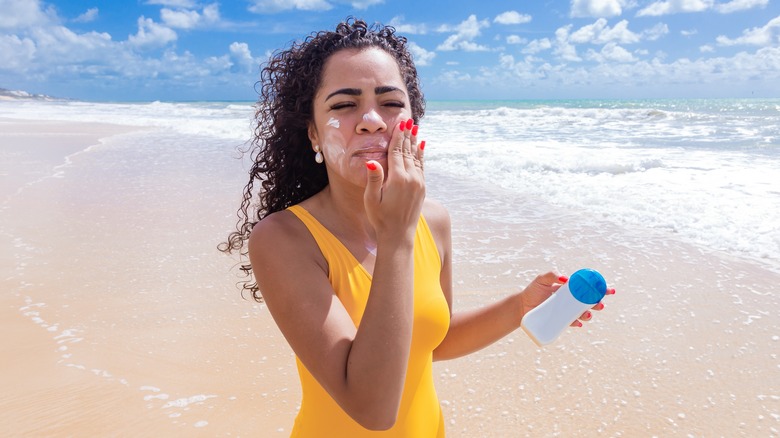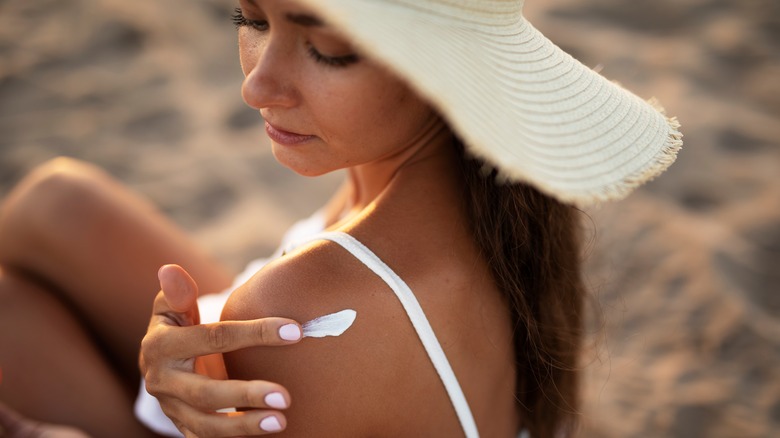What You Should Consider When Deciding Your SPF Level
It doesn't matter whether you have dry, oily, or combination skin: There needs to be sunscreen in every skincare routine. It protects the skin from the harmful effects of ultraviolet (UV) radiation, which can cause a range of skin damage from sunburn to an increased risk of skin cancer. Getting into the habit of using sunscreen can help prevent these risks by a significant margin, according to the Skin Cancer Foundation. Aesthetically speaking, sunscreen also helps you with any anti-aging skin goals you may have. Sun damage is one of the leading causes of premature aging, including wrinkles, fine lines, and age spots. By protecting your skin with sunscreen, you can help prevent these issues and maintain a more youthful appearance.
One critical factor you want to be aware of when picking out sunscreen is SPF. While most of us know this number is important for skin health, many don't know what it precisely signifies, or exactly how it helps us. SPF stands for sun protection factor, which is a measure of how effectively a sunscreen product protects skin from UVB rays, the type of radiation that causes sunburn and contributes to skin cancer. Finding the right SPF number is essential to keeping your skin safe and risk-free — and we're here to help you determine it.
How to pick your ideal SPF level
Choosing the right SPF for your skin is key to ensuring adequate protection against UV radiation. The American Academy of Dermatology recommends using sunscreen with an SPF of 30 or higher for daily use. This is a great starting point, but getting more specific and personalized can be a bit more complex. For starters, it's important to consider your skin type and how it reacts to the sun. If you have fair skin that burns easily, you may want to choose a higher SPF. On the other hand, if you have a darker complexion that tans easily, you may be able to use a lower SPF. You also want to consider the time of day and the activities you'll be doing. If you'll be spending time outside during hours when the sun is strongest, or participating in activities that'll cause you to sweat or otherwise get wet, you'll want to choose a higher SPF and a water-resistant formula.
Even if you're using a higher SPF, you need to be considerate of how much sunscreen you're applying. Using approximately one ounce to cover the entire body is recommended, as is reapplying every two hours — more frequently if you're swimming or sweating. Some sunscreen ingredients may also cause irritation or allergic reactions, so be sure to read the labels carefully and choose a product that is appropriate for your skin. By taking these factors into account, you can choose a sunscreen that provides adequate protection and is appropriate for your skin.
Other ways of protecting your skin
While choosing the right SPF number is essential for getting the best sunscreen coverage, there are other ways you can protect your skin from the damage of UV and UVB rays. One of the most effective methods is to seek shade, especially during peak hours when the sun is strongest. This can be achieved by staying indoors, under a tree or awning, or by wearing a wide-brimmed hat or other protective clothing. In cases of extreme sun, or when you know you'll be exposed for a long period, specialized clothing can protect you from sun damage. UPF clothing is specifically designed to block UV radiation, while SPF clothing is made from materials that provide a physical barrier between your skin and the sun.
It's also important to be aware of any medications or skincare products you might be using, which can increase your sensitivity to the sun. Certain antibiotics, retinoids, and other medications can make your skin more prone to sun damage, which means you need to increase your sunscreen usage. You should also be aware of protecting your eyes with proper coverage. Like sunscreen, not every piece of eyewear is made equally. When picking out your sunglasses for a sunny day, ensure they're made to protect against UV and UVB rays.


